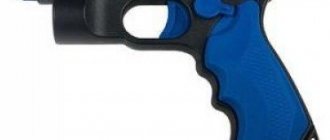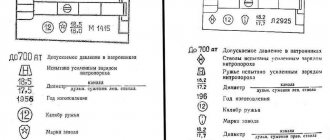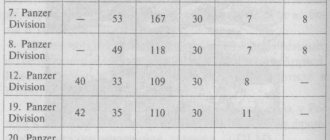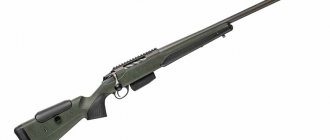Today's episode of the capital show Field of Miracles is dedicated to the upcoming holiday - Victory Day. On the calendar June 18, 2021, at 8 pm, and again we hear the greeting of our beloved presenter Leonid Yakubovich, who has been hosting this TV show for many years.
Good evening, ladies and gentlemen, we invite the first three players to the studio. 9 people take part in the game, three in each round, then the winners of each round meet in the final, and there the main winner of today's game is determined! He is traditionally offered to play a super game, but he has the right to refuse this offer, because if he loses the super game, he will lose all the prizes, and if he guesses at least the main word in the super game, he will take everything. And having guessed all three words, he will drive away in a brand new car!
What was the name of the tax in Rus' for determining the mass of salt on a scale?
Field of Miracles 06/18/2021. Here is the task for the first round. In Rus', the production and trade of salt was subject to numerous duties. There was even a tax for determining the mass of salt on a scale. What was this tax called (the word comes from the name of the scales)? (9 letter word)
Weighed (weighed) or kontarnoe - a duty that was taken from the sale of weighed goods. The fee for determining the mass of goods on scales (Sprint-Response) was also called. Contarnoye is a duty that had to be paid for conducting trade operations with salt.
Answer: Contarnoe (9 letters).
What was the big hammer called in the old days and why?
In Rus', a large, heavy hammer was called Balda.
If you look in the dictionary, the word bald means a rhizome, a club, a club, although it is a wooden object, it is quite heavy. This word in Rus' was used to describe a heavy blacksmith’s hammer (sledgehammer) or a heavy reel. That is why the hammer got its name. It is doubtful that it was included in the crossword puzzle, since its origin is associated with criminal jargon. This is what they called an accomplice in a crime or the leader of a gang: sidekick (corefan > root > root.
There is also the word “kunak”, borrowed from Turkic, found in the Asian republics (for example, among the Kazakhs) and among the Caucasian highlanders, but it rather means “guest” or “friend”, but is not associated with companionship.
Since the question should specifically indicate a small guard detachment, then it could be either Picket or Watch , because these words have exactly five letters.
Japan is famous for its knives and there are many names of them, however, if you take classic and specifically kitchen knives, there are only three of them, but they are sure to be in every Japanese kitchen where national dishes are prepared. Moreover, each of these knives has different varieties, which are called differently in different regions of Japan.
1 Yanagiba (yanagiba);
This part of the bird's body is called the TAIL , in other words the back of the bird.
Source
What was the duty for transporting salt across a bridge called in Rus'?
Field of Miracles 06/18/2021. Here is the task for the second round. In Rus' at the beginning of the 12th century, all salt breweries were subject to state duty. The salt itself entering the market was also subject to a duty. They even charged a toll for transporting salt across the bridge. What was this duty called? (10 letter word)
Bridge tax is a tax for travel (passage) on a bridge, which was collected by the bridge workers. Mentioned since the second half of the 14th century.
Answer: Mostovshchina (10 letters).
Description of war hammers
Warhammer (English: Warhammer) is a predominantly Western term; in Russian literature, this weapon is often called a klevets or mint. Although a small hatchet with a hammer on the butt is often called a “chaser”. The large number of varieties of war hammers that existed in different historical periods, as well as the practice of using hammers as part of a universal warhead along with an ax and a point, led to some confusion in the names.
The war hammer consisted of a shaft and a warhead attached to its top. The length of the shaft could be different, sometimes it reached a meter in length. However, short hammers designed to be held with one hand were also very common. The shaft was usually made of wood (its thickness could vary), but hammers with a metal handle were also found. The warhead had the shape of a parallelepiped or cylinder, one of the ends of which was pointed. A variety of methods were used to attach it to the shaft: a stopper, a rope, and others. The flat part of the striker was called the butt; sometimes it ended with several teeth.
With the blunt side of the hammer it was possible to stun an enemy and break his bones without even breaking through his armor. And to pierce armor or chain mail, a pointed part of the weapon was used, which was often called the beak.
The Swiss hammer Bec de Corbin, better known as the Lucerne hammer, had four spikes of considerable length on the butt, set apart from the central axis of the striker.
The phrase “war hammer” usually evokes an association (you can thank computer games for this) with a huge and heavy weapon that resembles an ordinary blacksmith’s tool. This is not entirely true. By the way, similar misconceptions are associated with another type of impact weapon - a mace. Heavy forge hammers may have been used on the battlefield in some circumstances, but a war hammer designed specifically for warfare was something entirely different. As a rule, this weapon was fencing with one hand, and its weight was 1-2 kg. But in general, we can add that war hammers bore little resemblance to what we are accustomed to understand by the word “hammer.” The main function of this weapon during the period of its greatest distribution was to defeat a well-protected enemy. Some types of war hammer that have survived to this day did not have a hammer at all.
What are the main advantages of a war hammer over other types of melee weapons? There are several of them. First of all, this is the penetrating power of hammers. After the advent of plate armor, the sword began to increasingly turn into an attribute of status, since it was very difficult to hit an enemy clad in iron with it. The center of gravity of a hammer is much higher than that of a sword, so the blow is much more crushing. In addition, all its strength is concentrated at one point, so to break through armor it is not necessary to have very great strength.
A hammer has another advantage over a spear, ax or sword: it never gets stuck. This is especially important during a duel with a shield bearer. Almost any weapon gets stuck in a wooden shield, but not a hammer. The fact is that upon impact, it does not so much pierce as break through the barrier, forming a fairly wide hole. With sufficient strength and skill, you can split the shield with a few successful blows.
The war hammer had another significant advantage over the sword: it was much cheaper. In the Middle Ages, making a long and strong sword blade was a whole story. This required good quality iron and highly qualified blacksmiths. Therefore, swords were expensive and were not as widespread as modern cinema shows. In addition, a good blow can cause damage to the sword blade (or even break it) and not all of them can be dealt with using a whetstone. A hammer (like a mace) is a completely different matter. The steel for the warhead can be medium, or even very medium. If marks appear on it during use, they will not affect the combat qualities of the weapon in any way.
Why, then, have not war hammers and maces replaced expensive and not very reliable swords? Alas, like any specialized weapon, the hammer has a number of disadvantages.
It was extremely difficult to parry enemy blows with a war hammer. It does not have a very suitable balance for this, in addition, the hilt of this weapon does not prevent the enemy’s blade from slipping. So the warrior definitely needed a shield. Also, the warhammer is not very well suited for use in close formations, it does not work very well at long ranges.
War hammers of the medieval period can be divided into three large groups:
- Short hammer or "rider's hammer". This is a one-handed weapon that was very popular among cavalrymen from the 13th to the 16th centuries. It had a length of 60-80 cm, the warhead weighed about half a kilogram. In Rus', short hammers were traditionally called “klevets” or “chasers”; they were loved by the Zaporozhye Cossacks (kelef, kelep) and the famous Polish hussars. The beak was often supplemented with a small ax and a point. The short hammer was used not only by riders, they were also used with pleasure for close hand-to-hand combat;
- Long or long-shafted hammer. This type of weapon had a shaft of considerable length, from 1.2 to 2 meters. Long-shaft hammers became widespread around the middle of the 14th century. This type of weapon was in many ways reminiscent of a halberd, but differed from it in that its warhead was not solidly forged, but consisted of individual elements. Their composition varied: very often such a hammer had a lance at the end, and an ax was installed instead of a beak. Such weapons are better known as Polex. The surface of the hammer often had teeth, and sometimes an inscription was applied to it. There are known variants of a long hammer, in which the warhead, in addition to the axe, also carried a beak, four spikes and a hammer, and on top there was a pike. Often a guard (rondel) was made on the shaft of long hammers to protect the hands;
- Throwing Hammer. Separately, we can highlight hammers intended for throwing at the enemy. They are very similar to the sports equipment that Olympians use today.
What was the name of the movement of people who carried grain to the south and brought salt?
Field of Miracles 06/18/2021. Here is the task for the final round. What was the name in the 17th century for the movement of people who transported bread and wooden products from the Slavic steppes to the south, and from there brought salt and salted fish? (10 letter word)
Plague. In the 17th century, many enterprising, brave people appeared from the free Cossacks and wealthy peasants, who transported bread and wooden products from the Slavic steppes to the south to the Black Sea region, and brought salt and salted fish from the south.
Answer: Plague (10 letters).
The winner scored 6100 points and decided not to participate in the Super Game; with the points he won, the winner chose a set of household appliances.
How did the war hammer come about?
The first war hammers appeared back in the Copper Age, when metallurgy had just begun to develop. Since blacksmiths-gunsmiths have always been distinguished by their remarkable strength, therefore in battles they often acted in the front ranks, often they were even leaders, since they could distribute weapons, and they knew how to wield them better than the civilian population, due to the specifics of their profession.
Initially, blacksmiths went into battle with their working hammers, but if they managed to stay alive, they often began to make themselves a special war hammer, which had a longer handle and a lighter head. What other weapon does a blacksmith master perfectly? Of course, those to whom he waves every day. The blow of the hammer, directed by the trained hand of the blacksmith, easily crushed bones, regardless of the armor.
Traditionally, war hammers were considered the weapons of professional warriors, since blacksmiths at the dawn of civilization were real masters of weapons, as they invented and tested them. It’s not for nothing that the strongest gods in mythology didn’t have swords
, and hammers and
axes
, the same Scandinavian Thor and his Mjolnir, for example.
In general, a whole mythological story is built around Thor’s hammer, so the Scandinavians respected war hammers very much, but they only used them extremely rarely. The same Mjolnir generally turned out to be an extremely awkward weapon, which was facilitated by Thor’s brother Loki. I hope that you already know that a real military polearm should have a long handle and a relatively light head? Remember the Wallachians
, and you will understand what I wanted to tell you.
So, Mjolnir received a short handle and a huge heavy head. According to Loki's plan, the finished weapon would become unsuitable for battle. But this did not stop Thor from using his hammer effectively.
In general, war hammers were used not only in Scandinavian countries. Greek and Russian blacksmiths constantly took to the battlefield with such weapons, and in other European countries too.
The structure of the average war hammer
Any hammer that has ever been used on the battlefield is a bludgeoning weapon. Different models, even in appearance, could seriously differ from each other, but they usually consist of the same parts:
- The shaft could be either short or long. Most often they were made of wood, although there were also war hammers with iron handles. But this is rather an exception to the rule;
- There was often a lanyard on the handle. It is clear that it was usually done on models with a short handle; two-handed players do not need it;
- The pommel of the handle was often made of different shapes. In two-handed models, this element was often made in the form of a counterweight ball. Short ones were sometimes made with a blade-shaped pommel. Personally, I have not seen such models in real life, but I was told that they exist;
- Hammer head. It could be of various shapes, but usually the blacksmiths were not carried away by weight and massiveness, and made one of the horses pointed.
Combined models most often had peaks on top. With such weapons it was possible to fight off even cavalry, not to mention simple infantry. Particularly effective were models with iron or iron-clad handles.
As for the klevtsy, they could effectively pierce armor or jam the enemy with a butt in order to take him prisoner. It is interesting that initially war hammers, which were a blacksmith's handy tool, used exclusively for necessity, in later times turned into the ceremonial weapon of the head of an army or a detachment of mercenaries. Most likely, this is due to the fact that the warriors with the hammer were the strongest and most skilled, and such people were previously chosen as commanders.










